#1920s pioneering poets
Photo

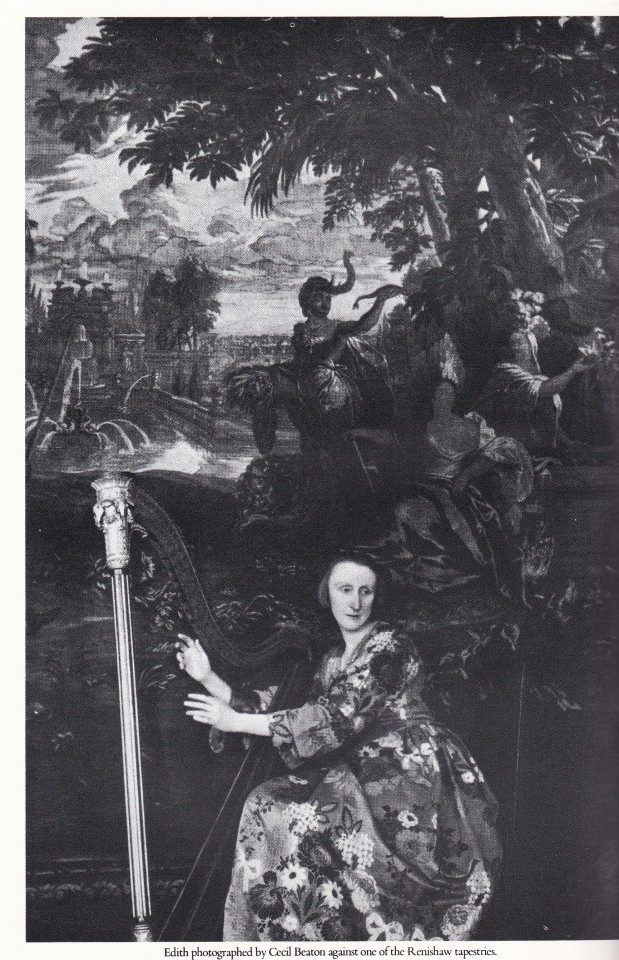

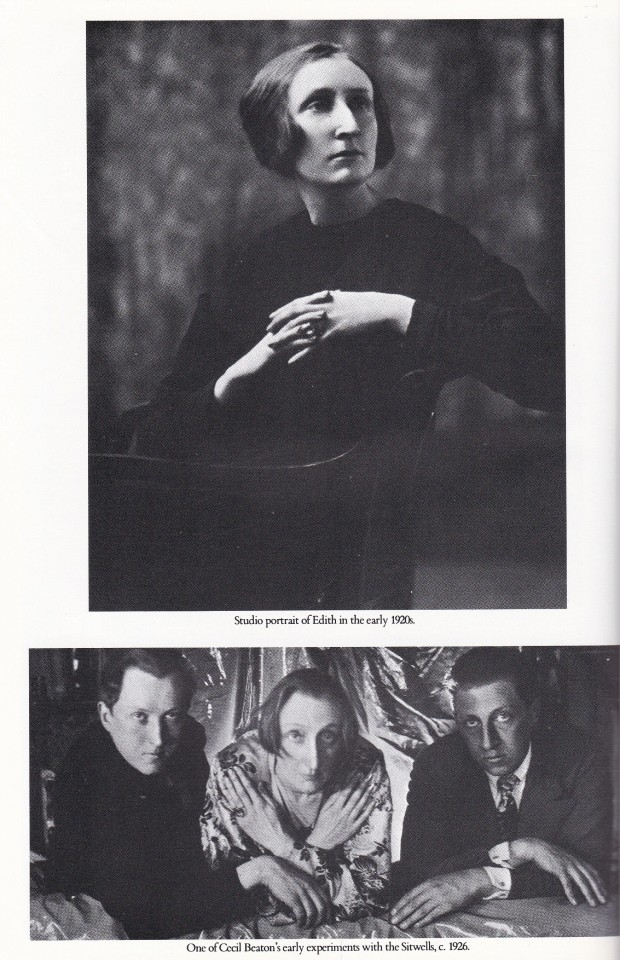
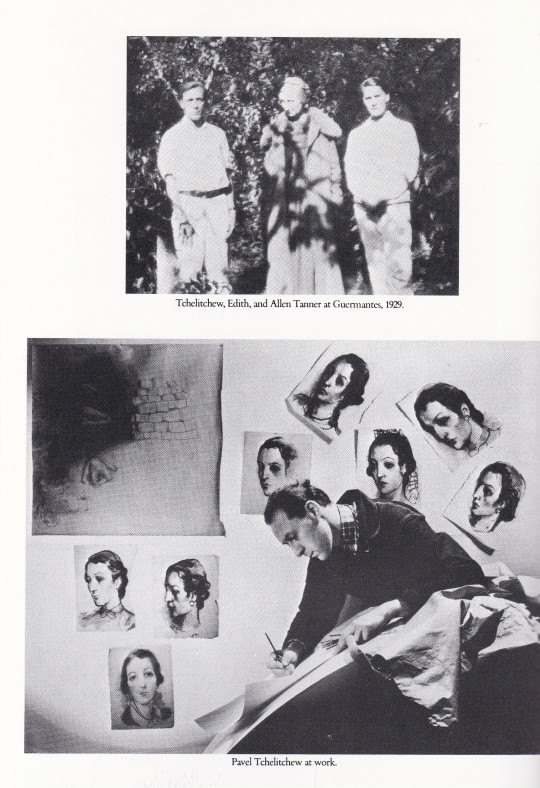
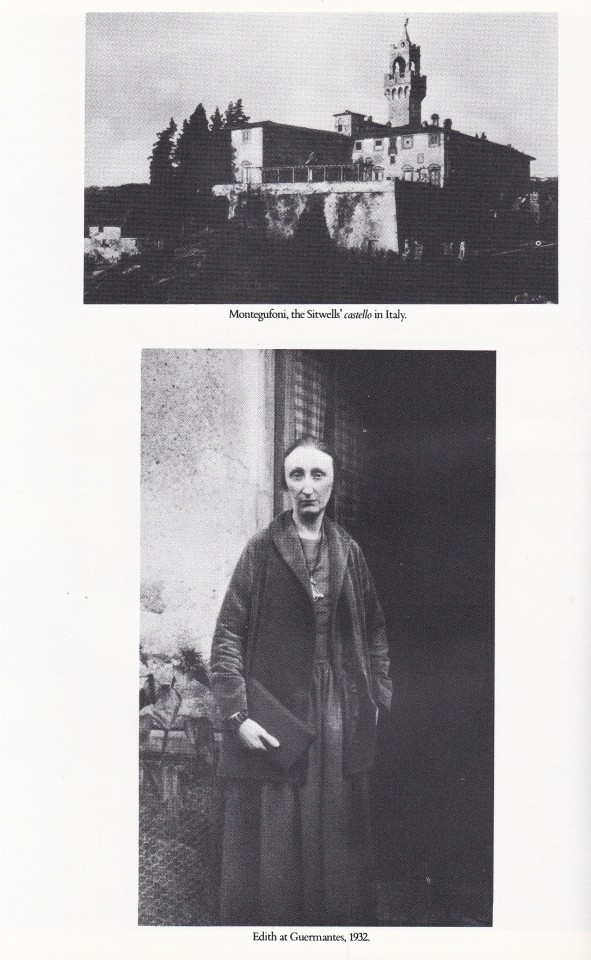

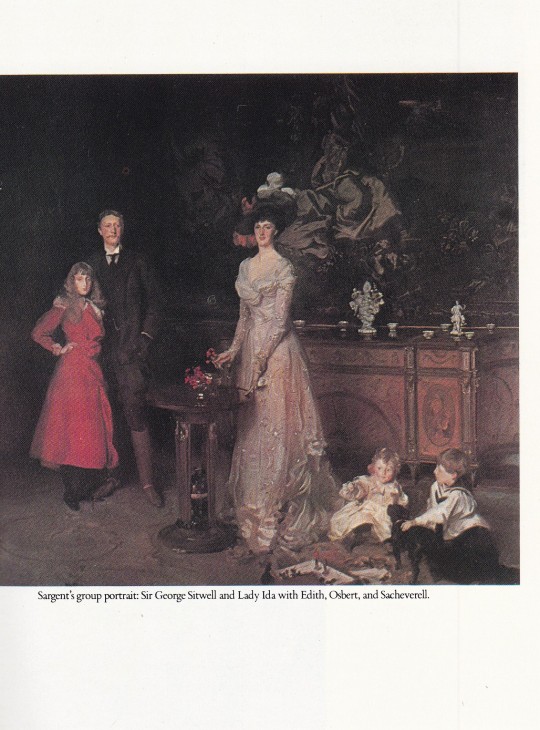
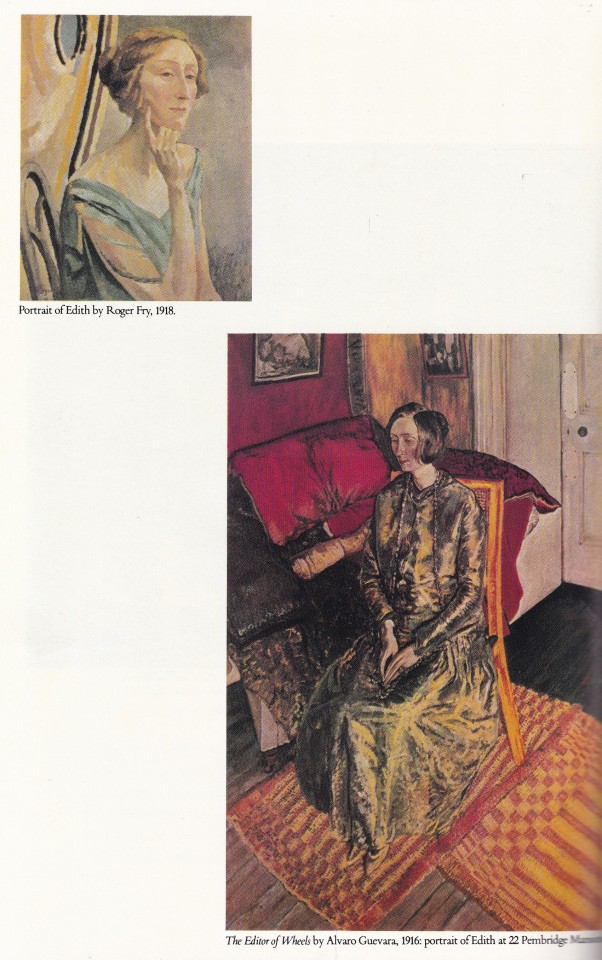

Edith Sitwell
A Unicorn Amongs Lions
Victoria Glendinning
Weidenfeld & Nicholson, London 1981, 393 pages, 20 illustrated pages, 13 x 20 cm, ISBN 0297778013
euro 30,00
email if you want to buy [email protected]
Freed from her unhappy homelife, Edith Sitwell set up home in a shabby London flat: she became one of the best-known 1920s pioneering poets. Victoria Glendinning presents a biography of a woman known for her eccentricity and gothic appearance.
Her looks attracted Cecil Beaton and the principal painters of the day. Among her friends were Aldous Huxley, T.S. Eliot, and Gertrude Stein. She rebuffed Wyndham Lewis and ardently loved the temperamental Russian painter, Pavel Tchelitchew. The 1930s she spent in penury, writing fiction, biography and verse. Only when Yeats hailed her as 'a major poet' did her work reach a wider audience, whereupon Edith Sitwell set off to conquer New York and Hollywood.
Winner of the Duff Cooper Prize and James Tait Black Memorial Prize for Biography, this is the definitive portrait of a spontaneous, gallant, yet tragically insecure woman.
'The excellence of Mrs Glendinning's book is that it remains wise and balanced while never sacrificing critical edge... It's hard to imagine a life of Edith Sitwell that could surpass it.' John Carey, "Sunday Times"
orders to: [email protected]
twitter: @fashionbooksmi
flickr: fashionbooksmilano
instagram: fashionbooksmilano
tumblr: fashionbooksmilano
16/02/23
#Edith Sitwell#Cecil Beaton#Roger Fry#Alvaro Guevara#eccentricity#gothic appearance#Sargent#Tchelitchew#Pavel Tchelitchew#Lady Machbeth#1920s pioneering poets#fashionbooksmilano
49 notes
·
View notes
Text

When you get publicly slapped by 4 surrealist poets because you insulted a guy's historical crush
(translation and context under the cut)
Gallantly Defending Robespierre’s Honour
In the conservative daily paper, Le Gaulois, on March 3, 1923, the journalist and man of letters, Wieland Mayr, expressed his pleasure: there would not be, he wrote, a "vile apotheosis" for "that holy scoundrel" Robespierre. On the other hand, Mathiez had the Surrealists with him. Following the article in Le Gaulois, Robert Desnos (1), accompanied by Paul Éluard (2), Max Ernst (3), and André Breton (4), summoned Mayr in a café and publicly slapped him for insulting the memory of "the Incorruptible."
Why did Mayr get Slapped?
In short: studying history in the 1920s was a messy business, especially when it came to the French Revolution….
To explain why Mayr ended up getting slapped, please allow me to briefly dive into the French Revolution's historiography during the late 19th and early 20th centuries. Keep in mind, that this is a grossly oversimplified version.
Before 1848, it was pretty standard for French republicans to proudly see themselves as inheritors of Robespierre’s legacy. (If you’ve ever wondered why in Les Misérables, Enjolras’ character is very much channeling Robespierre and Saint-Just, here’s your answer!) However, things start to change with the Second Republic.
In 1847, Jules Michelet brought back the negative portrayal of Robespierre as a tyrannical "priest" and leader of a new cult. This narrative helped fuel an increasing dislike for Robespierre, with radicals like Auguste Blanqui arguing that the real revolutionaries were the atheistic Hébertists, not the Robespierrists.
Jump to the Third Republic, and the negative sentiment towards Robespierre was only getting stronger, driven by voices like Hippolyte Taine, who painted Robespierre as a mediocre figure, overwhelmed by his role. This trend was politically motivated, aiming to reshape the Revolution's legacy to align with the Third Republic's secular values. Obviously, Robespierre, the "fanatic pontiff" of the Supreme Being, didn’t quite fit this revised narrative and was made out to be the villain. Alphonse Aulard (a historian willing to stretch the truth to make his point) continued pushing Danton as the face of secular republicanism. Albert Mathiez, one of Aulard’s students, was not having any of it and strongly disagreed with his mentor’s approach.
The general disdain for Robespierre began to shift after World War I. One reason was that people could better appreciate the actions of the Revolutionary Government after experiencing the repression during the war themselves. Albert Mathiez and his colleagues were actively working to change Robespierre's tarnished image. With tensions high, it's no wonder Mayr ended up being publicly slapped by a bunch of poets who were defending the Incorruptible's honour!
Notes
Robert Desnos (1900-1945) was a French poet deeply associated with the Surrealist movement, known for his revolutionary contributions to both poetry and resistance during World War II.
Paul Éluard (1895-1952) was a French poet and one of the founding members of the Surrealist movement, celebrated for his lyrical and passionate writings on love and liberty.
Max Ernst (1891-1976) was a German painter, sculptor, graphic artist, and poet, a pioneering figure in the Dada and Surrealist movements known for his inventive use of collage and exploration of the unconscious.
André Breton (1896-1966) was a French writer, poet, and anti-fascist, best known as the principal founder and leading theorist of Surrealism, promoting the liberation of the human mind.
Source: The text in the picture comes from Robespierre and the Social Republic by Albert Mathiez
72 notes
·
View notes
Photo

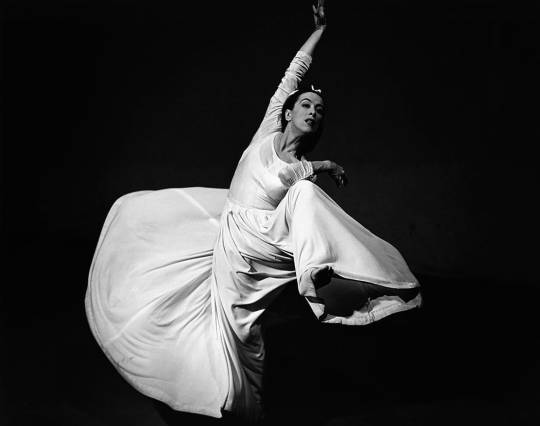
Seen above: "Letter to the World, Kick" and "Letter to the World (swirl)"Martha Graham (1894-1991) Barbara Morgan (1900-1992)
* * * *
In 1935 during the Great Depression in New York City, photographer Barbara Morgan joined creative forces with the modern dance artist Martha Graham. They would produce a series of photographs that would forever redefine their respective disciplines. Barbara Morgan, who originally taught design and printmaking at the University of California, Los Angeles, in the 1920s, eventually became convinced that the medium of photography could have equal expressionistic aesthetic qualities as graphic art.
Five years after she and her husband relocated to New York City in 1930 and she decided to fully dedicate her time towards the medium, Morgan attended one of Martha Graham’s dance performances. She was instantly struck by the historical and artistic importance of the emerging American modern dance embodied by the company. That same day, Morgan went to introduce herself to Graham and the two decided to embark upon a collaborative effort while also beginning a relationship that would last over six decades.
The photographer’s philosophical and aesthetic sensibilities, her intuitive understanding of dance as an “eloquent life force,” and her experience of the Native American dances in the Southwest corresponded with the pioneering efforts and ideas of Graham and her dance troupe.
As Morgan observed: “The other photographers and painters who dealt with the Depression, often it seemed to me, only added to defeatism without giving courage or hope. Yet the galvanizing protest danced by Martha Graham and others was heartening. Often nearly starving, they never gave up, but forged life-affirming dance statements of American society in stress and strain. In this role, their dance reminded me of Indian ceremonial dances which invigorate the tribe in drought and difficulty.”
Morgan began photographing Graham and her company in the controlled setting of her studio and not during public performances. The photographer was chiefly concerned with most effectively converting their spirit to photography’s two-dimensional and static state. She aimed to translate the essence, energy, and emotion of the dances by capturing the single moment of their visual peaks. Although Morgan’s negatives were particularly challenging to develop, she became a virtuoso printer and enjoyed developing them in a darkroom herself.In 1941, Morgan produced a seminal book entitled, “Martha Graham: Sixteen Dances in Photographs” with the most iconic image emerging as “Martha Graham: Letter to the World (Kick).” For this image, it required the dancer to repeat a single kicking sequence that was a part of her 1940 performance based on the love life of American poet Emily Dickinson. The dancer embodies Dickinson through the juxtaposition of energetic and retracted actions, while the depicted movement of the dancer’s bodily swirl symbolizes the transcendence of the poet’s personal tragedy.
Astonishingly timed, Graham’s face is caught in a moment of strained yet controlled emotion with the dancer’s somewhat rigid arms contrasting with the rhythm and energy of her seemingly effortlessly flowing dress. The interplay of space, shadow, figure, and movement crystallizes into a climatic expression of the power of the dance.
Copy courtesy of Holden Luntz Gallery
[Follies Of God]
#Follies of God#Martha Graham#dance#modern dance#1930s#Barbara Morgan#Holden Luntz Gallery#history of dance#people#about art#documentation
34 notes
·
View notes
Text
i for one would love to know what 1920s french poet pioneer of surrealism and documented homophobe andré breton would have thought about stick him in a dress and he's the only boy i'd shag
4 notes
·
View notes
Text
On this day in Wikipedia: Sunday, 7th April
Welcome, vítejte, velkommen, მოგესალმებით (mogesalmebit) 🤗
What does @Wikipedia say about 7th April through the years 🏛️📜🗓️?

7th April 2023 🗓️ : Death - Ben Ferencz
Ben Ferencz, American lawyer (b. 1920)
"Benjamin Berell Ferencz (March 11, 1920 – April 7, 2023) was an American lawyer. He was an investigator of Nazi war crimes after World War II and the chief prosecutor for the United States Army at the Einsatzgruppen trial, one of the 12 subsequent Nuremberg trials held by US authorities at..."

Image by
Prosecutor_Benjamin_Ferencz_at_the_Einsatzgruppen_Trial.jpg: US Army photographer on behalf of the OCCWC/IMT
derivative work: Minderbinder (talk)
7th April 2019 🗓️ : Death - Seymour Cassel
Seymour Cassel, American actor (b. 1935)
"Seymour Joseph Cassel (January 22, 1935 – April 7, 2019) was an American actor who appeared in over 200 films and television shows, with a career spanning over 50 years. He first came to prominence in the 1960s in the pioneering independent films of writer/director John Cassavetes. The first of..."

Image licensed under CC BY 2.0? by sagindie from Hollywood, USA
7th April 2014 🗓️ : Death - George Dureau
George Dureau, American painter and photographer (b. 1930)
"George Valentine Dureau (December 28, 1930 – April 7, 2014) was an American artist whose long career was most notable for charcoal sketches and black and white photography of poor white and black athletes, dwarfs, and amputees. Robert Mapplethorpe is said to have been inspired by Dureau's amputee..."
7th April 1973 🗓️ : Birth - Marco Delvecchio
Marco Delvecchio, Italian footballer
"Marco Delvecchio (Italian pronunciation: [ˈmarko delˈvɛkkjo]; born 7 April 1973) is an Italian retired professional footballer who played as a forward. Although he played for several Italian clubs throughout his career, he spent most of it at Roma, where he is still remembered by the club's fans..."

Image licensed under CC BY-SA 3.0? by Дмитрий Садовников
7th April 1924 🗓️ : Birth - Johannes Mario Simmel
Johannes Mario Simmel, Austrian-English author and screenwriter (d. 2009)
"Johannes Mario Simmel (7 April 1924 – 1 January 2009), also known as J. M. Simmel, was an Austrian writer. He was born in Vienna and grew up in Austria and England. He was trained as a chemical engineer and worked in research from 1943 to the end of World War II. After the end of the war, he worked..."

Image licensed under CC BY-SA 4.0?
7th April 1824 🗓️ : Event - Mechanics' institute
The Mechanics' Institution is established in Manchester, England at the Bridgewater Arms hotel, as part of a national movement for the education of working men. The institute is the precursor to three Universities in the city: the University of Manchester, UMIST and the Metropolitan University of Manchester (MMU).
"Mechanics' institutes, also known as mechanics' institutions, sometimes simply known as institutes, and also called schools of arts (especially in the Australian colonies), were educational establishments originally formed to provide adult education, particularly in technical subjects, to working..."
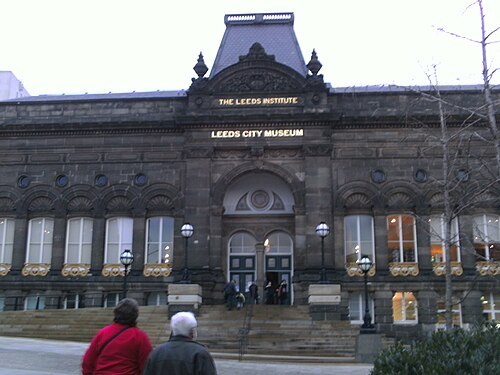
Image licensed under CC BY 3.0? by Mtaylor848
7th April 🗓️ : Holiday - Christian feast days: Blessed Notker the Stammerer
"Notker the Stammerer (c. 840 – 6 April 912), Notker Balbulus, or simply Notker, was a Benedictine monk at the Abbey of Saint Gall active as a composer, poet and scholar. Described as "a significant figure in the Western Church", Notker made substantial contributions to both the music and literature..."

Image by
Unknown authorUnknown author
0 notes
Text
Birthdays 1.23
Beer Birthdays
John Carling (1828)
Leopold Schmidt (1846)
Emily Banks, Miss Rheingold 1960 (1933)
Charlie Papazian (1949)
Brian Reccow (1970)
Five Favorite Birthdays
Gary Burton; jazz musician (1943)
Jerry Kramer; Green Bay Packers G (1936)
Edouard Manet; artist (1831)
Walter M. Miller Jr.; science fiction writer (1923)
Django Reinhardt; jazz guitarist (1910)
Famous Birthdays
Ray Abrams; jazz saxophonist (1920)
John Luther Adams; composer (1953)
Richard Dean Anderson; actor (1950)
Lou Antonio; actor & director (1934)
David Arnold; English composer (1962)
Jean-Michel Atlan; Algerian-French painter (1913)
Georg Baselitz; German painter & sculptor (1938)
Frances Bay; Canadian-American actress (1919)
Rutland Boughton; English composer (1878)
Jonatha Brooke; singer-songwriter & guitarist (1964)
John Browning; weapons designer (1855)
Muzio Clementi; Italian pianist, composer, & conductor (1752)
Camilla Collett; writer (1813)
Otto Diels; German chemist (1876)
Abraham Diepraam; Dutch painter (1622)
Dan Duryea; actor (1907)
Sergei Eisenstein; film director (1898)
Gertrude Elion; pharmacologist (1918)
Gil Gerard; actor (1943)
John Hancock; politician, revolutionary (1737)
Mariska Hargitay; actress (1964)
Rutger Hauer; actor (1944)
Joseph Hewes; signer of the Declaration of Independence (1730)
Ernie Kovacs; comedian (1919)
Doutzen Kroes; Dutch model & actress (1985)
W. Arthur Lewis; Saint Lucian-Barbadian economist (1915)
Boris McGiver; actor (1962)
Jeanne Moreau; French actress (1928)
Walter Frederick Morrison; businessman, invented Frisbees (1920)
Alois Negrelli; Tyrolean engineer & railroad pioneer (1799)
Gail O'Grady; actress (1963)
Anita Pointer; singer-songwriter (1948)
Marty Paich; pianist, arranger (1925)
John Polanyi; German-Canadian chemist (1929)
Claire Rankin; Canadian actress (1971)
Tom Reamy; author (1935)
Chita Rivera; actress, singer, & dancer (1933)
Randolph Scott; actor (1898)
Ieva Simonaitytė; Lithuanian author (1897)
Richard T. Slone; English painter (1974)
Lisa Snowdon; model (1972)
Stendhal; French writer (1783)
Potter Stewart; supreme court justice (1915)
Tiffani-Amber Thiessen; actress (1974)
Nikolay Umov, Russian physicist and mathematician (1864)
Derek Walcott; Saint Lucian poet & playwright (1930)
Fred Williams; Australian painter (1927)
Hideki Yukawa; Japanese physicist (1907)
Robin Zander; rock musician (1953)
0 notes
Text
SHŌJO
Shōjo means young girl and in this case it is a manga demographic that represents this type of teenage girl. It is nothing more than a suggestion for the public to get an idea of what type of person it is aimed at, it is not intended to exclude anyone. Being a demographic or category it can really deal with any genre, like for example sci-fi with Hajime Yadate and Yutaka Nanten's Cowboy bebop manga, or it can have more adult plotlines like Ai Yazawa's Nana case. Shōjo is not synonymous of romance, although it is the genre that most abounds in this category.

Nana Spanish / English
Did you know that horror manga is a shōjo thing? Well, that's right, great mangakas like Junji Ito or the proclaimed Queen of Horror manga, Kanako Inuki, have published their works in shōjo magazines.
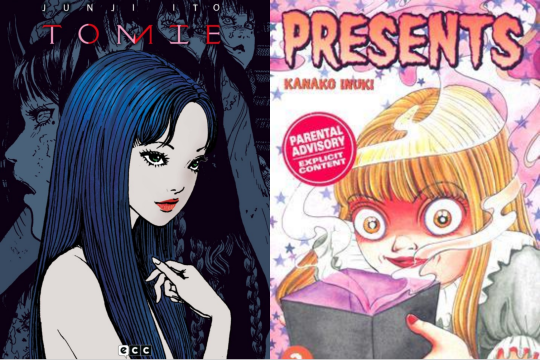
Tomie Spanish / English
Shōjo was born at the beginning of the 20th century with the appearance of magazines that were aimed at young girls. These magazines are nothing like today's, which only publish manga stuff. The content of the old ones was very varied, they used to include poems, articles, many illustrations, etc. but not manga. It was not until 1910 that the "manga" began to emerge, they were comic strips with four vignettes and a single page.
The first shōjo magazine to appear was Shōjo Kai (1903-1912), Shōjo Sekai (1906-1931) was the next and among the first to appear, the one that was surely the most important and the only one that survived the war was Shōjo no Tomo (1908-1955). A few years later a magazine of great importance would also begin to be published, the Shōjo Club (1923-1963).
Shojo magazines taught girls to be good mothers, good wives and good housewives, that is, "prepared them for their future". Whereas Shōnen magazines were full of boys having adventures and being great heroes.
(Giving the role of heroine to a girl was not something that was given much thought back then)
SHŌJO NO TOMO
In this magazine, women like Nobuko Yoshiya, who was a feminist, lesbian and a pioneer in lesbian literature, published some romantic stories, which was what she was most characterized. And Akiko Yosano who was a poet, feminist, social reformer and pacifist published some of her poems. but I am not going to focus on them.

In 1936 "Nazo no Clover" is published in Shōjo no Tomo, a work by Katsuji Matsumoto (1904-1986) that was forgotten and recovered in 2006. It was very innovative for the time and possibly a pioneer/prototype of the most current manga. It was a 16-page manga with a protagonist (reminiscent of "Zorro" but in a female version) who saves the peasants from the abuses of the nobility. We already have what would be the first heroine of the manga

After the arrival of the 2nd World War, the content of the shōjo magazines changed completely, now they only included war and patriotic topics. In addition, the girls left the housework to start working in factories. During this time the manga enters a void from which it does not recover until after the war.
After the war and with a Japanese society that continues to pay the consequences, the Kashi-hon became popular. The Kashi-hon were bookstores for rent, where girls (and boys too) could rent Akahon manga for 5 yen, which were like manga with reddish covers.
Post-war shōjo magazines were full of men who didn't know what girl readers wanted to find on their mangas. The reason why they worked for this type of magazine was because they wanted to gain fame to publish shōnen, that's why the shōjo manga of this time is boring and lacks plot (few authors are saved).
Machiko Hasegawa (1920-1992) was the first woman to make manga, with her work Sazae-San (1946). But the pioneer in shōjo manga was none other than Toshiko Ueda. She apprenticed with Katsuji Matsumoto and won several awards, including the Japan Cartoonists Association Excellence Award for her manga Ago Bāchan (1989) and the Shōgakukan Manga Award, one of the most prestigious manga awards.

Fuichin-san (1957-1962) (has a movie)
60s
After Shojo no Tomo (1955) disappeared and during the 60s, new magazines began to appear, such as Nakayonshi (manga such as Sailor Moon or Candy Candy have been published in it) by Kodansha (1954) or Ribon (1955) by Shūeisha. This same company also publishes Margaret (1963), the first time it was released it had 50% female mangaka (something that is incredible considering where we come from) and in 1969 90% of the mangaka who published in this they were women. These magazines were still not entirely manga and had fashion articles for example.
Some of the most outstanding mangaka of this decade are: Masako Watanabe, Miyako Maki, Hideko Mizuno and Yoshiko Nishitani. These women, unlike their male colleagues, knew how to connect more with their female audience since their protagonists were girls who were much more like reality, they were complex and had concerns, they laughed and cried, they fell in love and were disappointed.
MASAKO WATANABE (1929-)
is one of the most popular shōjo mangaka of this decade and is still very popular in Japan. She is still active and dedicating herself to manga and at the age of 91 she published her new work Himegoto. she is a diva

♡ Glass no Shiro (1969)
♡ Saint Rosalind (1973) horror shōjo
MIYAKO MAKI (1935-)
married the popular mangaka Leiji Matsumoto, they created some works together and she helped him create stronger female characters. Miyako won several awards such as: The 3rd Prize for Excellence from the Japan Cartoonists Association and the Montreal International Comic Contest Prize.

♡ Ha ha Koi Waltz (debut 1957)
♡ Maki no Kuchibue (1960)
MIZUNO HIDEKO (1939-)
liked the United States a lot and lived there for a while, which served as inspiration for her mangas. These were full of controversial topics, such as: racial discrimination, sex, drugs, rock, etc. And they also contained quite a bit of racial diversity.

♡ Fire! (1969-1971) the first male lead in shōjo
♡ Broadway no Hoshi (1967)
YOSHIKO NISHITANI (1943-)
created the first shōjo manga in a contemporary high school where the protagonist girl fell in love with a boy and truly managed to hook the female audience. Immediately Nishitani became very popular and there are rumors that she had so much work that she went a month without taking a shower.
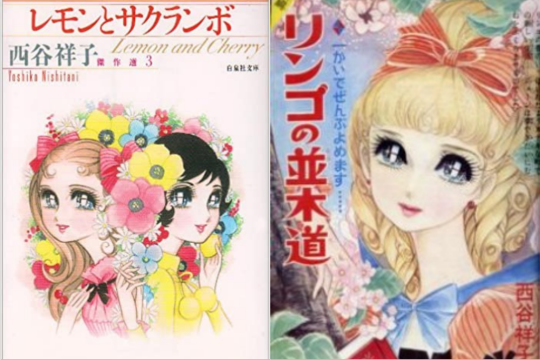
♡ Lemon and cherry (1966)
♡ Ringo no Namikimichi (1965)
These mangakas showed that before the Year 24 Group molds and stereotypes were already being broken. So if their works were so good and innovative, why is the shojo of this time criticized so much? For two reasons:
The critics of this decade were much more focused on manga produced by men, and I've said before that men don't put much effort into shōjo.
It is not until 1967 that the manga begins to collect, so many works published in magazines were lost at the beginning of the 60s and before
Even so, this does not detract from the contribution to the Shojo manga of the Year 24 Group (of which I already spoke).
Shōjo continued to develop aesthetically, as did new genres brought in by the "Year 24 Group" (such as shōnen-ai). And more and more female mangakas are starting to emerge, but I'll talk about all this soon.
62 notes
·
View notes
Text
So, I Hear You Liked: 1917
More World War One Films
I was very excited about 1917 when it first came out because it almost perfectly coincided with the 100th anniversary of the First World War, a conflict that I love to read about, write about, and watch movies about. This period is my JAM, and there's such a lot of good content for when you're done with Sam Mendes's film.
Obviously there are a lot of movies and TV shows out there - this is just a selection that I enjoyed, and wish more people knew about.
Note: Everyone enjoys a show or movie for different reasons. These shows are on this list because of the time period they depict, not because of the quality of their writing, the accuracy of their history or the political nature of their content. Where I’m able to, I’ve mentioned if a book is available if you’d like to read more.
I'd like to start the list with a movie that isn't a fiction piece at all - Peter Jackson's They Shall Not Grow Old (2019) is a beautifully produced film that allows the soldiers and archival images themselves, lovingly retimed and tinted into living color, to tell their own story. It is a must watch for anyone interested in the period.
Wings (1927), All Quiet on the Western Front (1930), A Farewell to Arms (1932, 1957), The Dawn Patrol (1938), Sergeant York (1941), and Paths of Glory (1957) are all classics with a couple of Oscars between them, and it's sort of fun to watch how the war gets changed and interpreted as the years pass. (The Dawn Patrol, for instance, might as just as easily be about the RAF in World War 2.)
All Quiet is based on a famous memoir, and A Farewell to Arms on a Hemingway novel; both have several adaptations and they're all a little different. Speaking of iconic novels, Doctor Zhivago (1965) based on the Pasternak novel of the same title, examines life of its protagonist between 1905 and the start of the second World War.
I think one thing historians agree on is that the start of World War One is worth discussing - and that there's a lot of backstory. Fall of Eagles (1974), a 13 part BBC miniseries, details the relationships between the great houses of Europe, starting in the 1860s; it's long but good, and I think might be on YouTube. The Last Czars (2019) takes a dramatized look at the Romanovs and how their reactions to the war lead to their eventual demise.
As far as the war itself, Sarajevo (2014) and 37 Days (2014) both discuss the outbreak of hostilities and the slow roll into actual battle.
The Passing Bells (2014) follows the whole war through the eyes of two soldiers, one German and one British, beginning in peacetime.
Joyeux Noel ( 2005) is a cute story - it takes place early in the war during the Christmas Peace and approaches the event from a multinational perspective.
War Horse (2011) is, of course, a name you'll recognize. Based on the breakout West End play, which is itself based on a YA novel by Michael Morpurgo, the story follows a horse who's requisitioned for cavalry service and the young man who owns him. Private Peaceful (2012) is also based on a Morpurgo novel, but I didn't think it was quite as good as War Horse.
The Wipers Times (2013) is one of my all-time favorites; it's about a short lived trench paper written and produced by soldiers near Ypres, often called Wipers by the average foot soldier. The miniseries, like the paper, is laugh out loud funny in a dark humor way.
My Boy Jack (2007) is another miniseries based on a play, this one about Rudyard Kipling and his son, Jack, who served in the Irish Guards and died at Loos. Kipling later wrote a poem about the death of his son, and helped select the phrase that appears on all commonwealth gravestones of the First World War.
Gallipoli (1981) is stunning in a way only a Peter Weir movie can be; this is a classic and a must-see.
Gallipoli is a big story that's been told and retold a lot. I still haven't seen Deadline Gallipoli (2015) an Australian miniseries about the men who wrote about the battle for the folks back home and were subject to censorship about how bad things really were. For a slightly different perspective, the Turkish director Yesim Sezgin made Çanakkale 1915 in 2012, detailing the Turkish side of the battle. Although most of The Water Diviner (2014) takes place after the war is over, it also covers parts of Gallipoli and while it didn't get great reviews, I enjoy it enough to own it on DVD.
I don't know why all of my favorite WWI films tend to be Australian; Beneath Hill 60 (2010) is another one of my favorites, talking about the 1st Australian Tunneling Company at the Ypres Salient. The War Below (2021) promises to tell a similar story about the Pioneer companies at Messines, responsible for building the huge network of mines there.
Passchendaele (2008) is a Canadian production about the battle of the same name. I'd forgotten I've seen this film, which might not say very much for the story.
Journey's End (2017) is an adaptation of an RC Sheriff play that takes place towards the end of the war in a dugout amongst British officers.
No look at the Great War is complete without a nod to developing military technologies, and this is the war that pioneers the aviation battle for us. I really wish Flyboys (2006) was better than it is, but The Red Baron (2008) makes up for it from the German perspective.
One of the reasons I like reading about the First World War is that everyone is having a revolution. Technology is growing by leaps and bounds, women are fighting for the right to vote, and a lot of colonial possessions are coming into their own, including (but not limited to) Ireland. Rebellion (2016) was a multi-season miniseries that went into the Easter Rising, as well as the role the war played there. Michael Collins (1996) spends more time with the Anglo-Irish war in the 1920s but is still worth watching (or wincing through Julia Roberts' bad accent, you decide.) The Wind that Shakes the Barley covers the same conflict and is excellent.
The centennial of the war meant that in addition to talking about the war, people were also interested in talking about the Armenian Genocide. The Promise (2016) and The Ottoman Lieutenant (2017) came out around the same time and two different looks at the situation in Armenia.
This is a war of poets and writers, of whom we have already mentioned a few. Hedd Wynn ( 1992) which is almost entirely in Welsh, and tells the story of Ellis Evans, a Welsh language poet who was killed on the first day of the Battle of Passchendaele. I think Ioan Gruffudd has read some of his poetry online somewhere, it's very pretty. A Bear Named Winnie (2004) follows the life of the bear who'd become the inspiration for Winnie the Pooh. Tolkien (2019) expands a little on the author's early life and his service during the war. Benediction (2021) will tell the story of Siegfried Sassoon and his time at Craiglockhart Hospital. Craiglockhart is also represented in Regeneration (1997) based on a novel by Pat Barker.
Anzac Girls (2014) is probably my favorite mini-series in the history of EVER; it follows the lives of a group of Australian and New Zealand nurses from hospital duty in Egypt to the lines of the Western Front. I love this series not only because it portrays women (ALWAYS a plus) but gives a sense of the scope of the many theatres of the war that most movies don't. It's based on a book by Peter Rees, which is similarly excellent.
On a similar note, The Crimson Field (2014) explores the lives of members of a Voluntary Aid Detachment, or VADs, lady volunteers without formal nursing training who were sent to help with menial work in hospitals. It only ran for a season but had a lot of potential. Testament of Youth (2014) is based on the celebrated memoirs of Vera Brittain, who served as a VAD for part of the war and lead her to become a dedicated pacifist.
Also, while we're on the subject of women, though these aren't war movies specifically, I feel like the additional color to the early 20th century female experience offered by Suffragette (2015) and Iron-Jawed Angels (2004) is worth the time.
As a general rule, Americans don't talk about World War One, and we sure don't make movies about it, either. The Lost Battalion (2001) tells the story of Major Charles Whittlesey and the 9 companies of the 77th Infantry division who were trapped behind enemy lines during the battle of the Meuse Argonne.
I should add that this list is curtailed a little bit by what's available for broadcast or stream on American television, so it's missing a lot of dramas in other languages. The Road to Calvary (2017) was a Russian drama based on the novels of Alexei Tolstoy. Kurt Seyit ve Şura (2014) is based on a novel and follows a love story between a Crimean officer (a Muslim) and the Russian woman he loves. The show is primarily in Turkish, and Kıvanç Tatlıtuğ, who plays the lead, is *very* attractive.
Finally, although it might seem silly to mention them, Upstairs Downstairs (1971-1975 ) Downton Abbey (2010-2015) and Peaky Blinders (2013-present) are worth a mention and a watch. All of them are large ensemble TV shows that take place over a much longer period than just the Great War, but the characters in each are shaped tremendously by the war.
#so i hear you liked#preaching the period drama gospel i am#world war one#period drama#period drama trash#1917
68 notes
·
View notes
Text
History of Norwegian Bunads
In honor of the 17th of May I decided to do some research on a topic I’ve been curious about, the history of the bunad!

I’ve been told that they’re only a little more than a century old, but that doesn’t mix with the fact that I’ve seen paintings from the 1800s that depict people wearing them. Interestingly, the person who told me they were newer wasn’t wrong. What we know as the modern bunad comes from the early 1900s, but it was based on earlier styles.
Around 1840 Norway started its National Romantic period. During this time there was an interest in folk traditions, poetry, music and art. A huge focus was placed on the farming communities. The idea was to turn away from the elitism of the bustling cities influenced by foreign countries and emphasize the rural culture as the unadulterated Norwegian example.

The clothes worn by farmers were adopted by young people as a way to show their Norwegian identity and their rejection of elitism.
We owe the current iteration of the bunad to Hulda Garborg, a Norwegian writer, novelist, playwright, poet, folk dancer, and theater instructor. In her teenage years she was a member of the radical youth culture in Kristiania (modern Oslo). Later she was participated in politics and championed women’s rights.

One of the areas she was a pioneer in was bunad tradition. In 1914 she used a piece of a folk costume from Valdres as a starting point and created a totally new outfit. This method is where the modern bunads come from! A pattern from a piece of an original folk costume is used as inspiration to form the new bunad.
Bunads became more popular in the 1920s and many cities and towns wanted their own. Today there are around 450 outfits that fit under the bunad umbrella with designs varying to an incredible degree based on the area they represent. Even the silver jewelry has regional differences.

If you want to see more examples of bunads you can check out this store which has everything from men’s and women’s bunads to shoes, jewelry, and other accessories.
#bunad#norwegian history#I want to make a separate post on bunads in general#but it would be way too much for one post and is going to take a decent amount of research
108 notes
·
View notes
Text
scandalous beauty - dolores del río - an analysis
“I love my native Mexico but I love Hollywood, too. It has brought me much happiness and yet, while here I have been miserably unhappy also. But through it all I have found myself, my work and my true destiny.” - Dolores del Río
Like Lupe Vélez, Dolores del Río was a pioneering Latina actress, however del Río’s reach was longer. Far from being stigmatized as a woman of colour, she was acknowledged as the epitome of beauty in the Hollywood of the 1920s and early 1930s. While she insisted upon her ethnicity, she was nevertheless coded white by the film industry and its fans, and she appeared for more than a decade as a romantic lead opposite white actors. Returning to Mexico in the early 1940s, she brought enthusiasm and prestige to the Golden Age of Mexican cinema, becoming one of the great divas of Mexican film. With struggle and perseverance, she overcame the influence of men in both countries who hoped to dominate her, ultimately controlling her own life professionally and personally. Her sophistication, style and artistry bewitched everyone from Stella Adler to John Ford, Federico Fellini, and her great friends Frida Kahlo and Diego Rivera, who proclaimed to be “totally in love with her, just like forty million Mexicans and one hundred and twenty million Americans who couldn’t be wrong.” She was America’s first Latina superstar, and by the early 1930s, she was one of Hollywood's ten top moneymakers. Hers was a charmed life, but not even she was without problems. A child of privilege in her native Mexico, her family’s status was destroyed in the Mexican Revolution, and her desire to restore her comfortable lifestyle inspired del Río to follow a career as an actress. Discovered and promoted by American director Edwin Carewe, her obsessive protector and Svengali, as the “female Rudolph Valentino,” del Río’s aristocratic, Spanish-European background was constantly pushed to counteract Hollywood’s racism against Mexicans; indeed she was generally thought to be one of the most beautiful actresses of her era, and was the first Latin American movie star to have international appeal. She worked for over five decades and paved the way for Latin American stars in American cinema.
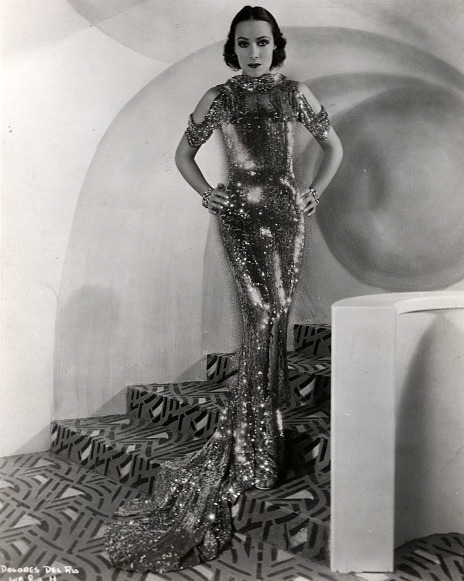
Dolores del Río, according to astrotheme, was a Leo sun and Aries moon. She was born María de los Dolores Asúnsolo López-Negrete in the Mexican town of Durango; she was an only child born to parents who belonged to the wealthy Mexican aristocracy. She was the second cousin of actor Ramón Novarro and a cousin to actress Andrea Palma. They lived the high life in the company of intellectuals and artists. Dolores attended a prestigious school but soon their world was turned upside down, threatened by an insurrection led by Pancho Villa in the region. Del Río and her mother escaped Mexico City disguised as peasants, while her father crossed the border to the United States. When the family eventually reunited in 1912, they did so under the protection of Francisco I. Madero. In 1920 she married the 18-year older attorney Jaime Martinez del Río and became a socialite. Her career got off to a good start when in 1925 when the lauded American director Edwin Carewe was invited to her home and saw her perform and dance for her family and friends. He persuaded del Río and her husband to moved to the United Sates and go to Hollywood to be in his films. While in Hollywood, del Río played a variety of leading roles, from European aristocrat to "native" girl to European peasant.
Within a few years after her arrival, she was a major hit and her appeal was astonishingly broad. She quickly came to command a substantial salary and to exercise control over her choice of films, scripts, and camera angles. Despite the fact that she did not speak English when she first began and had to have the director 's instructions delivered through interpreters, she made the transition to sound films gracefully. Her accent was deemed slight, attractive, and not specific to a particular country. As socially attractive as she was, physically and personality-wise, the truth is that a major part of del Río’s seamless transition into Hollywood is down to racism and white supremacy. While her contemporary (and nemesis) Lupe Vélez was viewed as the "bad Mexican wildcat" (to be fair, her temperament didn’t help this stereotype), Dolores was viewed as the "good Spanish lady." The contrast between the two stars and their degrees of acceptance reflected society’s stereotypical dichotomy between "good" Spanish and "bad" Mexican images– which has its roots in U.S. history. While most Mexicans were perceived as racially inferior, the elite Hispanic Californianas were deemed European and superior while the mass of Mexican women were viewed as Indian and inferior. Californiana women who possessed land and intermarried with Anglo men were depicted positively; they were represented as aristocratic and virtuous and they epitomized "good" women; but this was at the price of denying their racial identity, and being treated as racially superior to Californiano males and the rest of their people. So as such, she soon divorced her Mexican husband Jaime in 1928 and two years later married MGM art director Cedric Gibbons (who happened to be Gary Cooper’s wife’s uncle).
Soon after her marriage, she was romantically linked with actor Errol Flynn, filmmaker John Farrow, writer Erich Maria Remarque, film producer Archibaldo Burns, and actor Tito Junco. However, it was her affair with Orson Welles, who considered her the love of his life, that was arguably her most high profile relationship. She and Welles met at a party hosted by director Darryl Zanuck. The couple felt a mutual attraction and began a discreet affair, which upon eventual discovery caused the divorce between Dolores and Gibbons. Their relationship lasted for 4 years; she ended it when she got word of Welles cheating on her. She decided to end her relationship with Welles through a telegram that he never answered. According to his daughter, Rebecca, until the end of his life, Welles felt for del Río a kind of obsession. Weeks later, her father died in Mexico. With these personal and professional downturns, Dolores del Río returned to Mexico in the 1940s and became a significant part of the Mexican film industry’s Golden Era. She was the muse of director Emilio Fernández and starred most notably in Las Abandonadas (1944) and La Malquerida (1949). On a national and even international level though, Dolores del Río will perhaps always be best remembered for her role in the 1946 classic María Candelaría, which is said to be the film of which she was most proud. It also marked the first tentative steps of the Mexican film industry into the world of serious cinema and was the first Latin American film to be screened at the Cannes Film Festival in 1946, where it won the Grand Prix (now known as the Palme d’Or) for Best Picture. After her triumph in her native homeland, she returned to Hollywood and played opposite Henry Fonda in The Fugitive (1947). She continued to work steadily, starring in various TV shows and films until retiring in 1978. On April 11, 1983, del Río died from liver failure at the age of 78 in Newport Beach, California.
Next week, I’ll focus on her one-time lover, an iconoclastic disruptor who took on the conventions of Hollywood and won: the amazing Taurus Orson Welles.
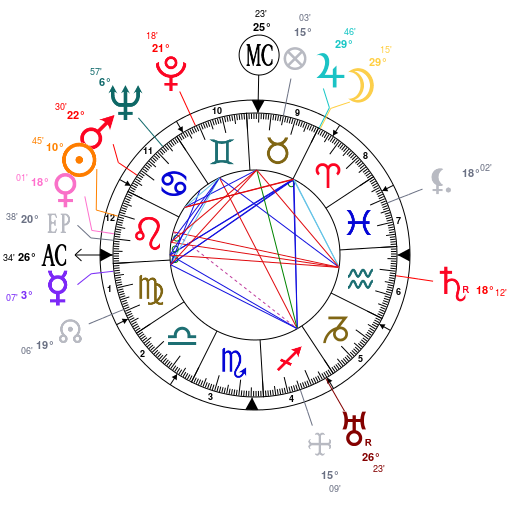
Stats
birthdate: August 3, 1904
major planets:
Sun: Leo
Moon: Aries
Rising: Leo
Mercury: Virgo
Venus: Leo
Mars: Cancer
Midheaven: Taurus
Jupiter: Aries
Saturn: Aquarius
Uranus: Sagittarius
Neptune: Cancer
Pluto: Gemini
Overall personality snapshot: She had a large, warm-hearted, extroverted personality that was always eager to embrace life, love and success – in big doses. There was something about her that assumed the divine right to live life to the full, and her intensity and impatience, along with her personal ambitions, pulled her ever onwards into new projects, fresh relationships and greater challenges. She was something of a gambler and had a daring and dramatic spirit which propelled her forward to make her mark, a sense of personal destiny which can only be exciting and noble. And she was prepared to fight for that glorious destiny if she had to, although she would rather simply steal the show and convince everyone with her intelligence, originality, courage and fabulous style. One of her most beguiling qualities is that she was totally lacking in guile and pretense. Although her own personal destiny was what interested her, paradoxically she at first looked for people she could admire and make into personal heroes. Strongly influenced by a favourite teacher, friend, poet, sports champion or movie star, she could then emulate them and learn through experience how to be great.
She loved the process of creating, as well as the applause that came at the end. Indeed, she relied on those adoring strokes and affirmative responses more than she liked to admit. Life without people would be colourless and boring for her. Social interaction was her life-blood – she could be the life of the party, a real ham and an eccentric, ready to take up the most outrageous dare. But when her extrovert escapades dry up, so did she. She may have, in fact, driven herself to exhaustion and then collapse like a child, home from an all-night rave-up. Yet despite her headlong rush into the experience of life, she was not necessarily irresponsible. Daring and highly idealistic dreams worked away inside her and made her want to improve things, to show people the way, and she may have simply taken charge – for a while. Intensely self-motivated, she did not respond well to orders from others, even though she could be quite bossy herself. There is a touch of the preacher inside her, and she approached her work with great enthusiasm and commitment. She needed space to do her own thing, to learn from her own mistakes, and to learn how to impose her own brand of self-discipline. Her innate self-dramatizing tendencies made her a natural for the theater, business, lecturing, the media – areas that involved group interaction and provided scope for her original and iconoclastic ideas.
She had great presence with a strong-featured face and a sunny glow of inner self-confidence and displayed a regal quality in her posture and carriage; was definitely well-built. She sought perfection in whatever she did and could be very critical of herself and her own efforts. In this way, she often became overly critical and pedantic, especially under stress. She was basically an honest person, and it disturbed her greatly when she had to deal with people who were not. Anyone who violated her sense of trust had a very hard time getting it back. It was very important for her to know that she had the security of a guaranteed paycheck coming in regularly. She had an artistic side to her that obviously influenced her choice of career as an actor. Once she had decided upon her career, she was able to (and most certainly did) pursue it with great determination. She had boundless enthusiasm and big ideas coupled with high expectations of succeeding. She was also self-sufficient and broad-minded. Her genuine pioneering spirit, positive outlook and large-scale personal ambitions led her right to the top. She needed to learn to think before you take on a challenge, and all risks should have been carefully considered. She needed to learn to relax and slow down. She was anxious to prove herself both to others and to herself. If anyone said that she couldn’t do something, she defied them to try and stop her. As long as she felt that she was the one in control, she had a high degree of optimism and was fun-loving, loving to play at life.
She had an original mind and used every skill she possessed to gain control of her affairs. She found it hard to let go of the past, and it would have been good if she did so that she could grow. She was willing to tolerate austerity for as long as it was justified. She respected institutions for as long as they served her purpose. She had the ability to judge what was viable or important. She belonged to a generation with fiery enthusiasm for new and innovative ideas and concepts. Rejecting the past and its mistakes, she sought new ideals and people to believe in. As a member of this generation, she felt restless and adventurous, and was attracted towards foreign people, places and cultures. She was part of an emotionally sensitive generation that was extremely conscious of the domestic environment and the atmosphere surrounding their home place and home country. In fact, she could be quite nostalgic about her homeland, religion and traditions, often seeing them in a romantic light. She felt a degree of escapism from everyday reality, and was very sensitive to the moods of those around him. Dolores embodied all of these Cancer Neptunian ideals, when she returned to her native Mexico in 1943, a country of which she was very proud, her decision to return to her roots changed her career. As a Gemini Plutonian, she was mentally restless and willing to examine and change old doctrines, ideas and ways of thinking. As a member of this generation, she showed an enormous amount of mental vitality, originality and perception. Traditional customs and taboos were examined and rejected for newer and more original ways of doing things. As opportunities with education expanded, she questioned more and learned more.
Love/sex life: She had a heroic conception of herself as a lover. She saw herself as strong and in control, the protector of the weak and the saviour of the desperate. Unfortunately, the realities of her love life didn’t always support this notion. Often it was her tender feelings that required protection and her desperate plunges in and out of love that called for a saviour. In order to justify this discrepancy, she often had to be less than honest, both with her lover and herself. The person most likely to win her heart would have been that individual who made it appear as if she was the champion when, in fact, she was the one crying for help. Her tendency toward self-deception often extended to a failure to admit to her very natural emotionalism and sexual passivity. Unfortunately, there always came a day of reckoning when she had to “own” her emotional susceptibility and capitulate to her sloppy feelings of dependency and her deep-seated need for affection. The good news was that surrendering everything for love wasn’t nearly as bad as she thought it was. She may have lost her dignity but what she got in return made it all worth while.
minor asteroids and points:
North Node: Virgo
Lilith: Pisces
Vertex: Sagittarius
Fortune: Taurus
East Point: Leo
These points in her chart, however minor, packed a major punch in her sex appeal as well. Her North Node in Virgo dictated that her tendency to dream and be disorganized needed to be tempered by developing more practical and down-to-earth attitudes. Her Lilith in Pisces meant that she was a woman who was a natural born mystic and cultivated her own myth. Her Part of Fortune in Taurus and Part of Spirit in Scorpio dictated that her destiny lay in attaining personal freedom through seeking material security and comfort. Happiness and good fortune came through tangible and practical results that had a solid foundation. Her soul’s purpose lay in delving fearlessly into the unknown. She felt spiritual connections and saw the spark of the divine when she could strip away the outer layers of experiences and get to the core of a situation. East Point in Leo dictated that she was more likely to identify with the need for pleasure (including the potential of liking herself) and comfort. Vertex in Sagittarius, 4th house reveals that she dreamt of the pinnacle of adventure when it came to mating. Her psyche yearned to be carried away to the ends of the earth or to be exposed to every manner of religious and/or philosophical theory known to man and then some. Her yearning was strong and really deep when it came to rarefied experiences of any sort. Encountering and wanting to join with her demanded that she always had an itinerary that will provide her with the maps to explore the roads that they have not yet traveled, to say nothing of the different worlds they have dreamed of but not yet experienced. She had a childlike orientation, in all of its manifestations, toward relationships on an internal level. That implicit dependency and impressionable nature that was instilled in her childhood persisted far into maturity. The concomitant explosions and occasional tantrums when these constructs are violated also accompany this position. She had a need for emotional security and comfort in a committed relationship, no matter how many years it has endured. She often had deep fears, typical of children, of abandonment, as well as a need for protection and universal acceptance, no matter how she acted, which she needed her partner to respect and nurture, rather than rebuke, especially in adulthood.
elemental dominance:
fire
earth
She was dynamic and passionate, with strong leadership ability. She generated enormous warmth and vibrancy. She was exciting to be around, because she was genuinely enthusiastic and usually friendly. However, she could either be harnessed into helpful energy or flame up and cause destruction. Ultimately, she chose the latter. Confident and opinionated, she was fond of declarative statements such as “I will do this” or “It’s this way.” When out of control—usually because she was bored, or hadn’t been acknowledged—she was be bossy, demanding, and even tyrannical. But at her best, her confidence and vision inspired others to conquer new territory in the world, in society, and in themselves. She was a practical, reliable man and could provide structure and protection. She was oriented toward practical experience and thought in terms of doing rather than thinking, feeling, or imagining. Could be materialistic, unimaginative, and resistant to change. But at her best, she provided the practical resources, analysis, and leadership to make dreams come true.
modality dominance:
fixed
She liked the challenge of managing existing routines with ever more efficiency, rather than starting new enterprises or finding new ways of doing things. She likely had trouble delegating duties and had a very hard time seeing other points of view; she tried to implement the human need to create stability and order in the wake of change.
house dominants:
12th
9th
1st
She had great interest in the unconscious, and indulged in a lot of hidden and secret affairs. Her life was defined by seclusion and escapism. She had a certain mysticism and hidden sensitivity, as well as an intense need for privacy. Traveling, whether physically across the globe, on a mental plane or expanding through study was a major theme in her life. She was not only concerned with learning facts, but also wanted to understand the connections formed between them and the philosophies and concepts they stood for. Her conscience, as well as foreign travel, people and places was also of paramount importance in her life. Her personality, disposition and temperament was highlighted in her life. The manner in which she expressed herself and the way she approached other people is also highlighted. The way she approached new situations and circumstances contributed to show how she set about her life’s goals. Early childhood experiences also factored in her life as well.
planet dominants:
Mercury
Sun
Venus
She was intelligent, mentally quick, and had excellent verbal acuity. She dealt in terms of logic and reasoning. It is likely that she was left-brained. She was restless, craved movement, newness, and the bright hope of undiscovered terrains. She had vitality and creativity, as well as a strong ego and was authoritarian and powerful. She likely had strong leadership qualities, she definitely knew who she was, and she had tremendous will. She met challenges and believed in expanding her life. She was romantic, attractive and valued beauty, had an artistic instinct, and was sociable. She had an easy ability to create close personal relationships, for better or worse, and to form business partnerships.
sign dominants:
Leo
Aries
Virgo
She loved being the center of attention and often surrounded herself with admirers. She had an innate dramatic sense, and life was definitely her stage. Her flamboyance and personal magnetism extended to every facet of her life. She wanted to succeed and make an impact in every situation. As a Leo dominant, she was, at her best, optimistic, honorable, loyal, and ambitious. She was a physically oriented individual who took pride in her body. She was bold, courageous, and resourceful. She always seemed to know what she believed, what she wanted from life, and where she was going. She could be dynamic and aggressive (sometimes, to a fault) in pursuing her goals—whatever they might be. Could be argumentative, lacked tact, and had a bad temper. On the other hand, her anger rarely lasted long, and she could be warm and loving with those she cared about. She was a discriminating, attractive, thorough, scientific, hygienic, humane, scientific woman and had the highest standards. Her attention to detail was second to none and she had a deeply penetrative and investigative mind.
Read more about her under the cut.
Dolores del Rio was the one of the first Mexican movie stars with international appeal and who had meteoric career in the 1920s/1930s Hollywood. Del Rio came from an aristocratic family in Durango. In the Mexican revolution of 1916, however, the family lost everything and emigrated to Mexico City, where Dolores became a socialite. In 1921 she married Jaime Del Río (also known as Jaime Martínez Del Río), a wealthy Mexican, and the two became friends with Hollywood producer/director Edwin Carewe, who "discovered" del Rio and invited the couple to move to Hollywood where they launched careers in the movie business (she as an actress, Jaime as a screenwriter). Eventually they divorced after Carewe cast her in her first film Joanna (1925), followed by High Steppers (1926), and Pals First (1926). She had her first leading role in Carewe's silent version of Pals First (1926) and soared to stardom in 1928 with Carewe's Ramona (1928). The film was a success and del Rio was hailed as a female Rudolph Valentino. Her career continued to rise with the arrival of sound in the drama/romance Bird of Paradise (1932) and hit musical Flying Down to Rio (1933). She later married Cedric Gibbons, the well-known art director and production designer at MGM studios.
Dolores returned to Mexico in 1942. Her Hollywood career was over, and a romance with Orson Welles--who later called her "the most exciting woman I've ever met"--caused her second divorce. Mexican director Emilio Fernández offered her the lead in his film Wild Flower (1943), with a wholly unexpected result: at age 37, Dolores del Río became the most famous movie star in her country, filming in Spanish for the first time. Her association with Fernández' team (cinematographer Gabriel Figueroa, writer Mauricio Magdaleno and actor Pedro Armendáriz) was mainly responsible for creating what has been called the Golden Era of Mexican Cinema. With such pictures as Maria Candelaria (1944), The Abandoned (1945) and Bugambilia (1945), del Río became the prototypical Mexican beauty. career included film, theater and television. In her last years she received accolades because of her work for orphaned children. Her last film was The Children of Sanchez (1978). (x)
23 notes
·
View notes
Text
Biopics
*** movies about historical figures that aren’t artists.
The Danish Girl (2015)
A fictitious love story loosely inspired by the lives of Danish artists Lili Elbe and Gerda Wegener. Lili and Gerda's marriage and work evolve as they navigate Lili's groundbreaking journey as a transgender pioneer.
Frida (2002)
A biography of artist Frida Kahlo, who channeled the pain of a crippling injury and her tempestuous marriage into her work.
Bessie (2015)
The story of legendary blues performer Bessie Smith, who rose to fame during the 1920s and '30s.
*** The Imitation Game (2014)
During World War II, the English mathematical genius Alan Turing tries to crack the German Enigma code with help from fellow mathematicians.
*** Milk (2008)
The story of Harvey Milk and his struggles as an American gay activist who fought for gay rights and became California's first openly gay elected official.
Kill Your Darlings (2013)
A murder in 1944 draws together the great poets of the beat generation: Allen Ginsberg, Jack Kerouac, and William Burroughs.
Capote (2005)
In 1959, Truman Capote learns of the murder of a Kansas family and decides to write a book about the case. While researching for his novel In Cold Blood, Capote forms a relationship with one of the killers, Perry Smith, who is on death row.
*** Gia (1998)
The story of the life of Gia Carangi, a top fashion model from the late 1970s, from her meteoric rise to the forefront of the modeling industry, to her untimely death.
Gods and Monsters (1998)
The last days of Frankenstein (1931) Director James Whale are explored.
*** Monster (2003)
Based on the life of Aileen Wuornos, a Daytona Beach prostitute who became a serial killer.
Iris (2001)
True story of the lifelong romance between novelist Iris Murdoch and her husband John Bayley, from their student days through her battle with Alzheimer's disease.
Wilde (1997)
The turmoil in poet/playwright Oscar Wilde's life after he discovers his homosexuality.
Tom of Finland (2017)
Award-winning filmmaker Dome Karukoski brings to screen the life and work of artist Touko Valio Laaksonen (aka Tom of Finland), one of the most influential and celebrated figures of twentieth century gay culture.
*** Boys Don't Cry (1999)
A young man named Brandon Teena navigates love, life, and being transgender in rural Nebraska.
Bohemian Rhapsody (2018)
The story of the legendary British rock band Queen and lead singer Freddie Mercury, leading up to their famous performance at Live Aid (1985).
Rocketman (2019)
A musical fantasy about the fantastical human story of Elton John's breakthrough years.
Prick Up Your Ears (1987)
Biographer John Lahr is writing a book about playwright Joe Orton. Joe and Kenneth meet at drama school and live together for ten years as lovers and collaborators. Both want to be writers, but only one of them is successful.
*** The Favourite (2018)
In early 18th-century England, the status quo at the court is upset when a new servant arrives and endears herself to a frail Queen Anne.
Christopher and His Kind
How real-life British-American author Christopher Isherwood and his German boyfriend Heinz met and fell in love during the 1930s and the rise of Nazism.
*** I Love You Phillip Morris (2009)
A cop turns con man once he comes out of the closet. Once imprisoned, he meets the second love of his life, whom he'll stop at nothing to be with.
*** Boy Erased (2018)
The son of a Baptist preacher unwillingly participates in a church-supported gay conversion program after being forcibly outed to his parents.
Vita & Virginia (2018)
It's the fascinating true story about the love affair between socialite and popular author Vita Sackville-West and literary icon Virginia Woolf.
*** Kinsey (2008)
A look at the life of Alfred Kinsey, a pioneer in the area of human sexuality research, whose 1948 publication "Sexual Behavior in the Human Male" was one of the first recorded works that saw science address sexual behavior.
*** Aimee & Jaguar (1999)
In 1943 Berlin, a Nazi officer's wife meets and starts a passionate affair with a Jewish woman.
Professor Marston & the Wonder Women (2017)
The story of psychologist William Moulton Marston, and his polyamorous relationship with his wife and their mistress who would inspire his creation of the superheroine, Wonder Woman.
Wild Nights with Emily (2018)
Dramatization of the little known side of the writer Emily Dickinson's life, in particular, her relationship with another woman.
Total Eclipse (1995)
Young, wild poet Arthur Rimbaud and his mentor Paul Verlaine engage in a fierce, forbidden romance while feeling the effects of a hellish artistic lifestyle.
35 notes
·
View notes
Photo
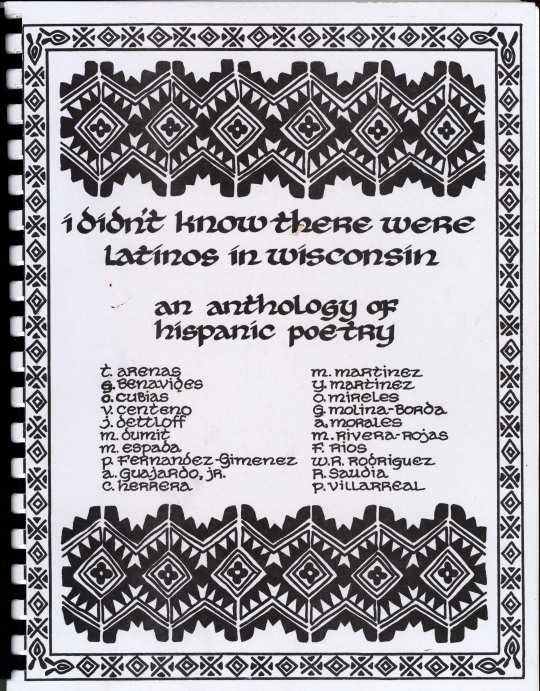

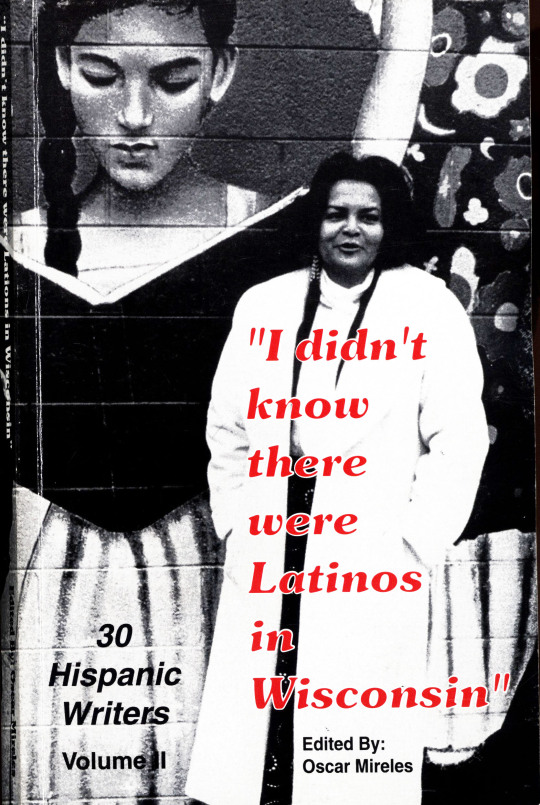


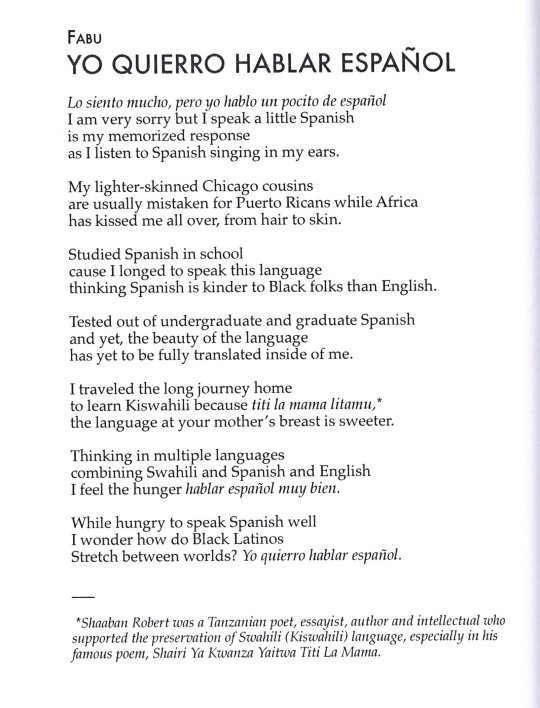




National Hispanic Heritage Month: LatinX Poetry
To continue our celebration of National Hispanic Heritage month (September 15 to October 15) we present excerpts from the poetry anthology I Didn’t Know There Were Latinos in Wisconsin, published over the course of 25 years, all edited by Oscar Mireles. The first volume was published in 1989, the second volume in 1999, and the third volume in 2014.
Editor Oscar Mireles was Poet Laureate of the City of Madison from 2016-17. He has been writing poetry for the past 35 years and his work has been published in over 50 different publications. Mireles has been the Executive Director of Omega School for the past 22 years. Omega School provides adult basic education services (GED Preparation) in Dane County.
The poetry found in these books reflects the diversity of life experiences found within the LatinX community. Armando Ibarra wrote in the introduction to the third volume:
“I Didn’t Know There Were Latinos in Wisconsin is a timely and important collection of work that brings to the attention of scholars, pundits, and society-at-large a narrative of a Latino community that would otherwise not receive the attention it merits. The editor brings a centered and multifaceted narrative of a long-standing Wisconsin Latino population that, while it shares many cultural and ethnic elements with a national pan-ethnic identity, has its own uniqueness that comes from the Latino experience in Wisconsin.
Latinos have been migrating and settling in Wisconsin since the early twentieth century. The pioneers followed employment trails to urban and rural areas where they worked in agriculture and manufacturing. They settled in cities like Milwaukee and Racine and established co-ethnic barrios that with time became vibrant communities that continue to welcome new arrivals. It is a story not so different from that of turn-of-the-20th-century German, Polish, and Italian immigrants who initially faced similar challenges to economic and civic integration.
I have had the pleasure of meeting immigrant, second- and third-generation Wisconsin Latinos from Madison, Milwaukee, Green Bay, Racine, Kenosha, and other areas. In conversations, they shared their stories of family migrations and reasons for settlement. Some trace their Wisconsin roots back to the 1920s. This book documents many of their stories and highlights the Tejas-to-Wisconsin connection that is rooted in the migrant farmworker labor migration that has existed for nearly a century.”
–Sarah, Special Collections Graduate Intern
#National Hispanic Heritage month#I Didn’t know there were Latinos in Wisconsin#Oscar Mireles#Armando Ibarra#Latinos#LatinX#Latina#Hispanic#poetry#poems#Hispanic Heritage Month#LatinX poetry#Latino poetry#Sarah Finn#sarah
31 notes
·
View notes
Text
subfluence merged in an ornamental lake
but these very subfluences 1
subfluence over boundaries or lands 2
subfluence which natural causes have on the limity of the reflection 3
subfluence, recording occurrences 4
subfluence over ennui. I had not the 5
subfluence. What do we do? What does the 6
subfluence, discoverable or unexplained 7
subfluence, at nights 8
subfluence in production or waste, used freely 9
subfluence literally incalculable, the principle on which 10
the heart-beat is subfluence. 11
subfluence diffused 12
subfluence full of romance 13
lies, and other caustic or irritant subfluence 14
subfluence, the signaling, the adjustment of huge mechanisms 15
subfluence merged in an ornamental lake 16
subfluences subdued 17
his special subfluence,
for he was an omnivorous reader, and had a picturesque and even romantic outlook on 18
subfluence, with the colors still 19
subfluence the entire cotton trade 20
subfluence spread far and wide. 21
subfluence, the possibility of human flight 22
subfluence for lack of language : error 23
Subfluenz-Prozesse 24
Subfluenz, einer varistischen 25
sources (most, and mostly OCR misreads)
1
OCR misread for “substances,”
at “Of points wherein we and Papists differ, viz., Transubstantiation, &c.,” in John Rawlet (1642-86 *), A dialogue betwixt two Protestants, in answer to a Popish Catechism (Third edition, corrected; London, 1686) : 82
2
ex “A sketch of the life and public services of Gen. William Henry Harrison.” in (Isaac Rand Jackson?), General William Henry Harrison, Candidate of the People for President of the United States (Baltimore, 1840) : 6
Harrison (1773-1841) would have a short (31-day) tenure as president, but had done enough damage in previous roles, particularly with regard to indigenous people.
see wikipedia
3
ex “Scripture and Geology” (by N), in The Mirror of Literature, Amusement, and Instruction (Saturday, August 14, 1841) : 99-103 (100)
see wikipedia for its publisher John Limbird (1796?-1883)
4
ex “Druids and Bards,” being an extensive notice/review of three books — J. B. Pratt The Druids Illustrated (1861), John Williams, ed., Brut y Tywysogion (1860), and Godfrey Higgins, The Celtic Druids (1829), in The Edinburgh Review, 118 (American Edition; July 1863) : 20-36 (35)
5
ex “A Rolling Stone.” By George Sand, translated from the French by Carroll Owen, in Library of Famous Fiction 2 (1879) : 1-113 (109)
6
OCR cross-colum misread, involving M. H. Cobb, “Common Sense Applied to Living” (pp 5-7) and “A Parlor Drama, in Two Acts” by Augusta De Bubna (pp 7-13), in The Brooklyn New Monthly Magazine, Henry Morford (1823-81), editor and manager; 1:1 (January 1880) : 7
7
ex A. Ernest Sansom, “The Dyspepsia of Infancy,” in The New York Medical Times 19:2 (May 1891) : 33-37 (34)
8
involving obituaries (memorials) for James Holmes and David Wright, in the section “Connexional Biography” in The Primitive Methodist Magazine 73 - London, 1892) : 51
on “Connexionalism” (and its relation to “network”), this, from wikpedia —
“The United Methodist Church defines connection as the principle that ‘all leaders and congregations are connected in a network of loyalties and commitments that support, yet supersede, local concerns.’ Accordingly, the primary decision-making bodies in Methodism are conferences, which serve to gather together representatives of various levels of church hierarchy.”
9
ex “Brief Gleanings : The treatment of Leanness and Obesity” in The Medical Brief (A Monthly Journal of Scientific Medicine; J.J. Lawrence, Proprietor) 20:10 (St. Louis, Mo; October 1892) : 1240
10
ex W. Garden Blaikie, “St. Paul’s Pastoral Counsels to the Corinthians.” in Exegetical and Expository Section, The Homiletic Review 29:5 (May 1895) : 451-453
11
Aloysius O. J. Kelly, “Essential Paroxysmal Tachycardia — Report of Four Cases.” (Read October 14, 1896), in Proceedings of the Philadelphia County Medical Society 17 (Session of 1896) : 166-180 (171)
Kelly (1870-1911) obituary at Boston Medical and Surgical Journal (now NEJM) March 9, 2011) : 360
12
out of chronology (and unlinkable snippet, only), mea culpa, ex The Evangelical Magazine and Missionary Chronicle 21 (1813) : 328
13
snippet only, evidently from Chapter 9 “Signs and Tokens” of Charles Dickens, Bleak House (1852-53), here ex Works Volume 3 (1899) : 374
14
misread involving “Milk a Universal Antidote” and “School-Meals for Underfed Children” in The Dietetic and Hygienic Gazette (A monthly journal of physiological medicine) 16:1 (January 1900) : 20
15
ex Edward Nelson, “Electricity in Service on British Battleships,” in Electricity 29:23 (December 6, 1905) : 311-313
16
preview snippet only, at (Commonwealth of Australia) Parliamentary Debates 57 (1910) : 3207
17
ex index of volume, Proceedings of the American Society for Psychical Research (Section “B” of the American Institute for Scientific Research) vol. 5 (New York, 1911) : 771
18
ex entry (by “C. L. G.”) for Meredith White Townsend (1831-1911), in Dictionary of National Biography, edited by Sidney Lee. Second Supplement vol. 3, Neil – Young (New York, 1912) : 532
19
preview snippet only, ex The American Year Book 5 (1915) : 300
20
§ 816. Corners... in William Herbert Page, The Law of Contracts Second edition; revised, rewritten and enlarged with forms. Volume 2. (Cincinnati, 1920) : 1441
21
ex “Balboa Day, September 17th, 1919 in Honolulu,” in Bulletin of the Pan-Pacific Union (January 1920) : 6
22
misread, involving report on “The Langley Flying Machine” (and some controversy between S. P. Langley and the Wright brothers), and “The Impurity of Pure Substances” (review of A. Smits, Theorie der Allotropie (1921)) in Nature 108 (November 3, 1921) : 298
23
misread, involving Booth et al v. Floyd (No 2358) and Blackstone v. Nelson, Warden (No 2457) in The Southeastern Reporter 108 (August 27 - December 3, 1921) : 114
24
H. J. Behr, “Subfluenz-Prozesse im Grundgebirgs-Stockwerk Mitteleuropas.” Zeitschrift der Deutschen Geologischen Gesellschaft 129 (1978) : 283-318
25
K. Weber, “Das Bewegungsbild im Rhenoherzynikum Abbild einer varistischen Subfluenz.” Zeitschrift der Deutschen Geologischen Gesellschaft 129 (1978) : 249-281
referring to the Variscan Orogeny (wikipedia)
method
1
There is no word “subfluence,” or only barely one.
This started with the self-written biographical note of poet Jack Hirschman, in A Caterpillar Anthology (Clayton Eshleman, ed., 1971) —
“They are lyrical poems, in verse or free-form, as distinguished from the poems in this anthology, which are breath forms reflecting a more total slavery to the conditions of the spirit’s war-torn years. The major influences on my works are influence itself, in as many levels of order, disorder, disaster, paranoia, joy and ecstasy as the deathless magic of being alive permits a vessel now of fire, now of air, to spark, glow, flame and ember according to the law of nature.”
“Influence” — that word — led to thinking about variations, e.g., effluence, outfluence, pre-fluence... “subfluence” —
an underground stream
a less-than fluency (stammering, stuttering)
a brittleness?
Little — or nothing — surfaced in a google books search, save for errors — typically a “sub” at the end of one line, a “fluence” at the start of the next (in a different column). Quite enough for present purposes. And so these subfluence derivations are built around a word that isn’t quite a word. Some license has been taken with the text in this post: dispensing ellipsis or [brackets] where text is erased (or rather, dropped); in some instances, some words that preceded the subfluence, are moved to follow it.
2
And yet, the word does appear, in some (and only a few) geological texts, typically having to do with the geotectonic unterströmungshypothese (undercurrent) concepts — and field work done in the Northern Calcareous Alps — of and by Otto Ampferer (1875-1947). More on Ampferer to come. For now, these references —
Wolf-Christian Dullo and Fritz A. Pfaffle, “The theory of undercurrent from the Austrian alpine geologist Otto Ampferer (1875-1947) : first conceptual ideas on the way to plate tectonics,” Canadian Journal of Earth Sciences 56 (2019) : 1095-11
here
Karl Krainer und Christoph Hauser, “Otto Ampferer (1875–1947): Pioneer in Geology, Mountain Climber, Collector and Draftsman,” in: Geo.Alp Sonderband 1 (2007) : 91–100
here (pdf)
wikipedia (in German)
Dr. Otto Ampferer. “Über das Bewegungsbild von Faltengebirgen” (On the movement pattern of folded mountains), in Jahr. Geol. Reichsanstalt (Yearbook of the Austrian Geological Survey), 56:3-4 (1906) : 539-622
“Mit 42 Zinkotypien im Text”
here
3
“Subfluence” also surfaces as a company name, social media handle, &c., &c.
—
all tagged subfluence
5 notes
·
View notes
Text
Black bi/lesbian women
Day 1 - Gertrude “Ma” Rainey (1886-1939)
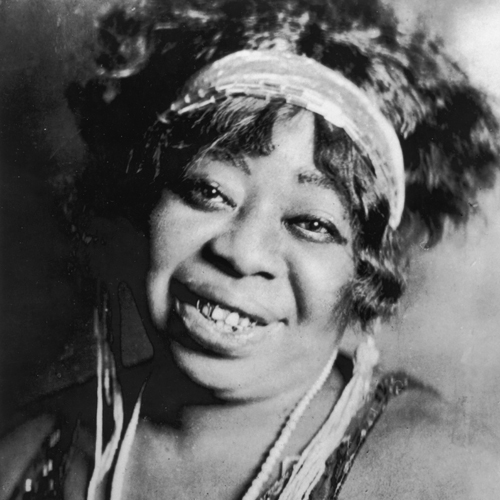
Ma Rainey was the first Vaudeville entertainer to incorporate the blues into her performances, which led to her to – perhaps justifiably – become known as the “Mother of the Blues.” Although she was married, Rainey was known to take women as lovers, and her song “Prove It on Me Blues” directly references her preference for male attire and female companionship. Rainey often found herself in trouble with the police for her lesbian behavior, including an incident in 1925 when she was arrested for taking part in an orgy at home involving women in her chorus. Bessie Smith bailed her out of jail.
Day 2 - Zora Neale Hurston (1891–1960)
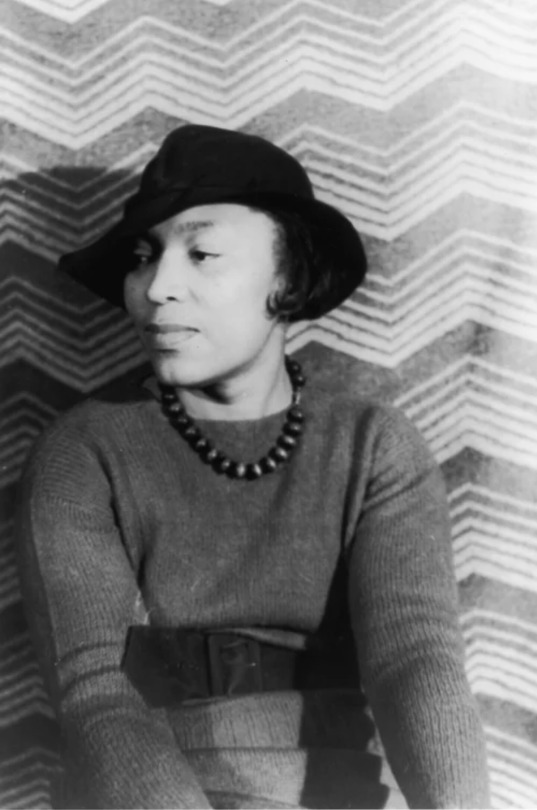
Zora Neale Hurston was an American folklorist, anthropologist, and author during the Harlem Renaissance. During her lifetime, she published four novels and more than 50 short stories, plays and essays. She is perhaps best known for her novel Their Eyes Were Watching God, published in 1937. Today, nearly every black woman writer of significance – including Maya Angelou, Toni Morrison, and Alice Walker – acknowledges Hurston as a key influence. Although she was never public about her sexuality, the book Wrapped in Rainbows, the first biography of Zora Neale Hurston in more than 25 years, explores her deep friendships with luminaries such as Langston Hughes, her sexuality and short-lived marriages, and her mysterious relationship with vodou.
Day 3 - Bessie Smith (1894-1937)
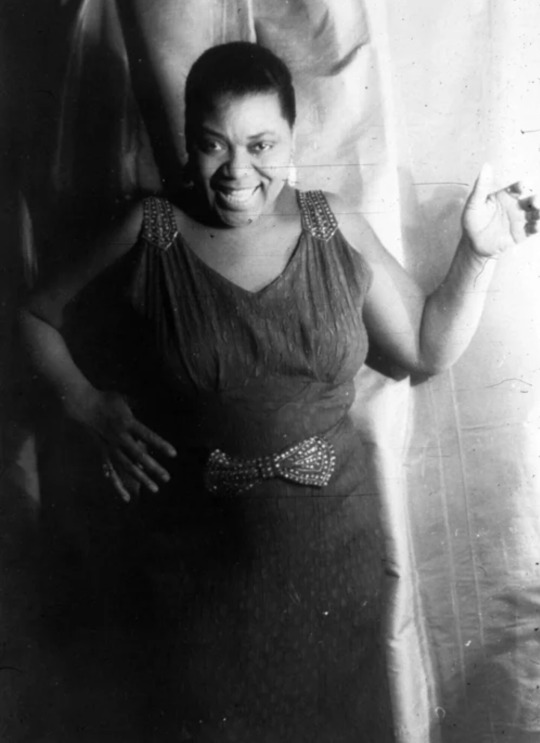
Widely referred to as The Empress of the Blues, Bessie Smith is considered one of the most popular female blues singers of the 1920s and 1930s and is credited, along with Louis Armstrong, as a major influence on jazz vocalists to this day. Bessie Smith began her professional career in 1912 by singing with Ma Rainey and subsequently performed in various touring minstrel shows and cabarets. As a solo artist, Smith was an integral part of Columbia’s Race Records, and her albums each sold 20,000 copies or more. Although married to a man named Jack Gee, Smith had an ongoing affair with a chorus girl named Lillian Simpson.
Day 4 - Mabel Hampton (1902–1989)
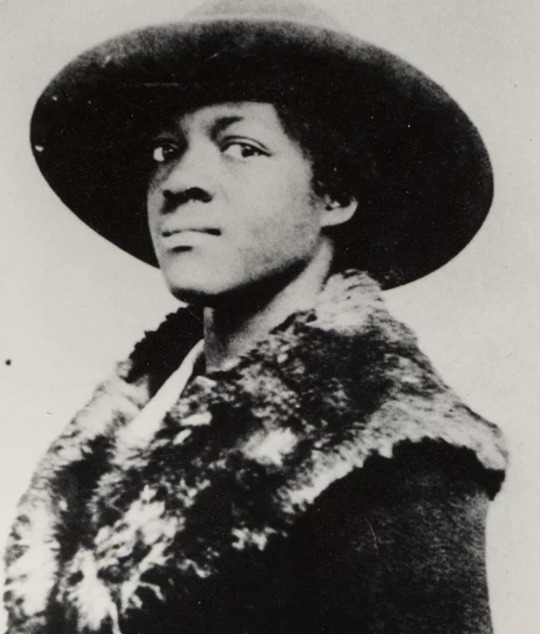
Mabel Hampton was a dancer during the Harlem Renaissance and later became an LGBT historian, philanthropist and activist. She met her partner, Lillian Foster, in 1932 and the two stayed together until Foster’s death in 1978. Hampton marched in the first National Gay and Lesbian March on Washington, and she appeared in the films Silent Pioneers and Before Stonewall. In 1984, Hampton spoke at New York City’s Lesbian and Gay Pride Parade. Hampton’s collection of memorabilia, ephemera, letters and other records documenting her history are housed at the Lesbian Herstory Archives and provide a window into the lives of black women and lesbians during the Harlem Renaissance.
Day 5 - Josephine Baker (1906–1975)

Josephine Baker was the 20th century’s “first black sex symbol.” An American dancer, singer and actress, Baker renounced her American citizenship in 1937 to become French. Despite the fact she was based in Europe, she participated in the American Civil Rights Movement in her own way. She adopted adopting 12 multi-ethnic orphans (long before Angelina Jolie) whom she called the “Rainbow Tribe,” she refused to perform for segregated audiences (which helped to force the integration of performance venues in the United States) and she was the only woman invited to speak at the March on Washington with Martin Luther King, Jr. Although she was married four times, her biographers have since confirmed her multiple affairs with women, including Mexican artist Frida Kahlo.
Day 6 - Gladys Bentley (1907-1960)
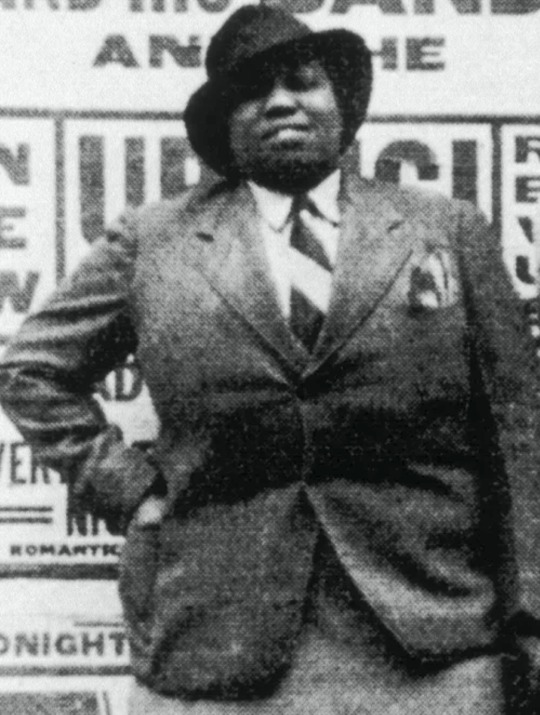
Gladys Bentley was an imposing figure. She was a 250-pound, masculine, dark-skinned, deep-voiced jazz singer who performed all night long at Harlem’s notorious gay speakeasies during the Harlem Renaissance while wearing a white tuxedo and top hat. Bentley was notorious for inventing obscene lyrics to popular songs, performing with a chorus line of drag queens behind her piano, and flirting with women in her audience from the stage. Unlike many in her day, she lived her life openly as a lesbian and claimed to have married a white woman in Atlantic City. An article in Ebony magazine quoted her as saying, “It seems I was born different. At least, I always thought so …. From the time I can remember anything, even as I was toddling, I never wanted a man to touch me.”
Day 7 - Lorraine Hansberry (1930–1965)

Lorraine Hansberry was an African-American playwright and author. Her best known work, A Raisin in the Sun, was inspired by her family’s own battle against racial bias in Chicago. Hansberry explored controversial themes in her writings in addition to racism in America, including abortion, discrimination, and the politics of Africa. In 1957 she joined the lesbian organization Daughters of Bilitis and contributed letters to their magazine, The Ladder, that addressed feminism and homophobia. While she addressed her lesbian identity in the articles she wrote for the magazine, she wrote under the initials L.H. for fear of being discovered as a black lesbian.
Day 8 - Audre Lorde (1934–1992)
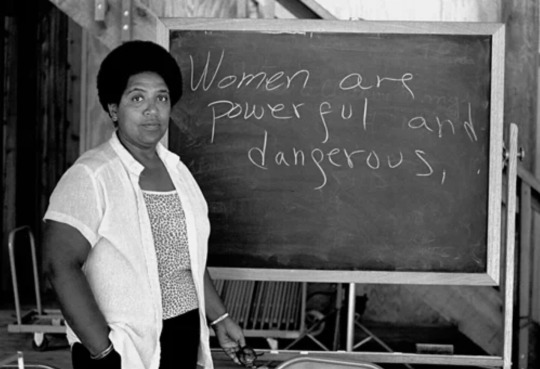
In her own words, Audre Lorde was a “black, lesbian, mother, warrior, poet.” Lorde began writing poetry at age 12 and published her first poem in Seventeen magazine at age 15. She helped found Kitchen Table: Women of Color Press, the world’s first publisher run by women of color, in 1980. Her poetry was published regularly throughout her life and she served as the State Poet of New York from 1991 to 1992. Lorde explored issues of class, race, age, gender and – after a series of cancer diagnoses — health, as being fundamental to the female experience. She died of liver cancer in 1992.
Day 9 - Barbara Jordan (1936–1996)
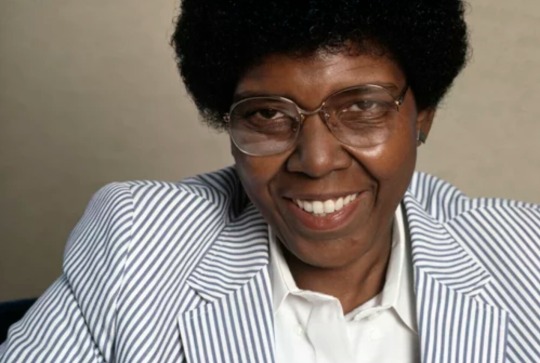
Representative Barbara Jordan (D-Texas) was the first African-American woman elected to Congress from a southern state. In 1976, she delivered the keynote address at the Democratic National Convention, marking the first time an African-American woman had ever done so. Her speech has since been ranked as one of the top 100 American Speeches of the 20th century and is considered by some historians to be among the best convention keynote speeches in modern history. Although Jordan never publicly acknowledged her sexual orientation, her Houston Chronicle obituary mentioned her longtime companion of more than 20 years, Nancy Earl. Her legacy inspired the Jordan Rustin Coalition, a Los Angeles-based organization dedicated to the empowerment of Black LGBT people and families.
Day 10 - June Jordan (1936-2002)
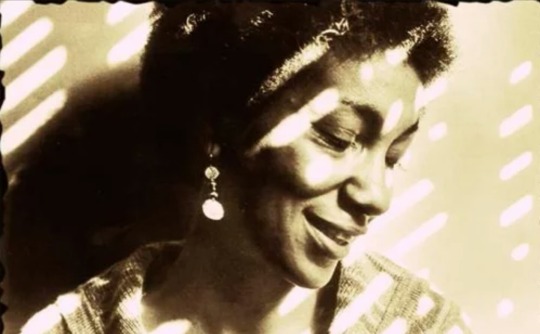
June Jordan was one of the most widely-published and highly-acclaimed African-American writers of her generation. A poet, playwright, speaker, teacher, journalist and essayist Jordan was also known for her fierce commitment to human rights political activism. Jordan said of her bisexuality, “bisexuality means I am free and I am as likely to want to love a woman as I am likely to want to love a man, and what about that? Isn’t that what freedom implies?” Her influential voice defined the cutting edge of both American poetry and politics during the Civil Rights Movement. She published 27 before her death from breast cancer in 2002 at the age of 65. Three more of her books have been published posthumously.
7K notes
·
View notes
Text
Birthdays 12.15
Beer Birthdays
Chuck Noll (1958)
Five Favorite Birthdays
Alex Cox; film director, actor (1954)
Gustave Eiffel; Frech engineer (1832)
Stan Kenton; jazz bandleader (1911)
Helen Slater; actor (1963)
Ludwig Zamenhof; linguist, Esperanto creator (1859)
Famous Birthdays
Maxwell Anderson; playwright (1888)
Bapu; Indian artist, film director (1933)
Henri Becquerei; French physicist (1852)
Adam Brody; actor (1979)
Nick Buoniconti; Miami Dolphins LB (1940)
Melanie Chartoff; actor (1948)
Dave Clark; pop singer (1942)
Buddy Cole; jazz pianist (1916)
Tim Conway; comedian, actor (1933)
J.M. DeMatteis; comic book writer (1953)
Charles Duryea; automobile pioneer (1861)
Freeman Dyson; physicist (1923)
Niels Ryberg Finsen; Danish physicist (1860)
Alan Freed; disc jockey (1922)
J. Paul Getty; gazillionaire businessman (1892)
Lew Grade; film producer (1906)
Friedrich Hundertwasser; artist (1928)
Don Johnson; actor (1949)
Nero; Roman emperor (37 C.E.)
Edna O'Brien; Irish writer (1930)
George Romney; artist (1734)
Muriel Rukeyser; poet (1913)
Kurt Schaffenberger; comic book artist (1920)
Betty Smith; writer (1896)
Paul Simonon; rock bassist (1955)
0 notes
Photo

The intelligent W.E.B. Du Bois
“William Edward Burghardt Du Bois (February 23, 1868 – August 27, 1963) was an American civil rights activist, leader, Pan-Africanist, sociologist, educator, historian, writer, editor, poet, and scholar. He was born and raised in Great Barrington, Massachusetts. He had two children with his wife, Nina Gomer. He became a naturalized citizen of Ghana in 1963 at the age of 95 – the year of his death.
As Activist
In 1905, Du Bois was a founder and general secretary of the Niagara Movement, an African American protest group of scholars and professionals. Du Bois founded and edited the Moon (1906) and the Horizon (1907-1910) as organs for the Niagara Movement.
In 1909, Du Bois was among the founders of the National Association for the Advancement of Colored People (NAACP) and from 1910 to 1934 served it as director of publicity and research, a member of the board of directors, and founder and editor of The Crisis, its monthly magazine.
In The Crisis, Du Bois directed a constant stream of agitation–often bitter and sarcastic–at white Americans while serving as a source of information and pride to African Americans. The magazine always published young African American writers. Racial protest during the decade following World War I focused on securing anti-lynching legislation. During this period the NAACP was the leading protest organization and Du Bois its leading figure.
In 1934, Du Bois resigned from the NAACP board and from The Crisis because of his new advocacy of an African American nationalist strategy that ran in opposition to the NAACP’s commitment to integration. However, he returned to the NAACP as director of special research from 1944 to 1948. During this period, he was active in placing the grievances of African Americans before the United Nations, serving as a consultant to the UN founding convention (1945) and writing the famous “An Appeal to the World” (1947).
Du Bois identified as a socialist and belonged to the Socialist Party from 1910 to 1912.
As Scholar
Du Bois’s life and work were an inseparable mixture of scholarship, protest activity, and polemics. All of his efforts were geared toward gaining equal treatment for black people in a world dominated by whites and toward marshaling and presenting evidence to refute the myths of racial inferiority.
From his earliest years, Du Bois was a prolific, gifted scholar. In 1884, Du Bois graduated from high school as valedictorian. He received his Bachelor of Arts from Fisk University in Nashville, Tenn., in 1888, having spent summers teaching in African American schools in Nashville’s rural areas. In 1888 he entered Harvard University as a junior, took a bachelor of arts cum laude in 1890, and was one of six commencement speakers. From 1892 to 1894 he pursued graduate studies in history and economics at the University of Berlin on a Slater Fund fellowship. He served for 2 years as professor of Greek and Latin at Wilberforce University in Ohio.
Du Bois received his Master of Arts from Harvard in 1891, and, in 1895, he became the first African American to receive a doctorate from the university. His dissertation, “The Suppression of the African Slave Trade to the United States of America, 1638-1870,” was published as No. 1 in Harvard Historical Series.
In 1896-1897, Du Bois became assistant instructor in sociology at the University of Pennsylvania. There he conducted the pioneering sociological study of an urban community, published as The Philadelphia Negro: A Social Study (1899). These first two works assured Du Bois’s place among America’s leading scholars.
From 1897 to 1910 Du Bois served as professor of economics and history at Atlanta University, where he organized conferences titled the Atlanta University Studies of the Negro Problem and edited or co-edited 16 of the annual publications, on such topics as The Negro in Business (1899), The Negro Artisan (1902), The Negro Church (1903), Economic Cooperation among Negro Americans (1907), and The Negro American Family (1908). Other significant publications were The Souls of Black Folk: Essays and Sketches (1903), one of the outstanding collections of essays in American letters, and John Brown (1909), a sympathetic portrayal published in the American Crisis Biographies series.
Du Bois also wrote two novels, The Quest of the Silver Fleece (1911) and Dark Princess: A Romance (1928); a book of essays and poetry, Darkwater: Voices from within the Veil (1920); and two histories of black people, The Negro (1915) and The Gift of Black Folk: Negroes in the Making of America (1924).
From 1934 to 1944 Du Bois was chairman of the department of sociology at Atlanta University. In 1940 he founded Phylon, a social science quarterly. Black Reconstruction in America, 1860-1880 (1935), perhaps his most significant historical work, details the role of African Americans in American society, specifically during the Reconstruction period. The book was criticized for its use of Marxist concepts and for its attacks on the racist character of much of American historiography. However, it remains the best single source on its subject.
Black Folk, Then and Now (1939) is an elaboration of the history of black people in Africa and the New World. Color and Democracy: Colonies and Peace (1945) is a brief call for the granting of independence to Africans, and The World and Africa: An Inquiry into the Part Which Africa Has Played in World History (1947; enlarged ed. 1965) is a major work anticipating many later scholarly conclusions regarding the significance and complexity of African history and culture. A trilogy of novels, collectively entitled The Black Flame (1957, 1959, 1961), and a selection of his writings, An ABC of Color (1963), are also worthy.
Du Bois received many honorary degrees, was a fellow and life member of the American Association for the Advancement of Science, and a member of the National Institute of Arts and Letters. He was the outstanding African American intellectual of his period in America.
As Global Citizen
In 1948, he was cochairman of the Council on African Affairs; in 1949 he attended the New York, Paris, and Moscow peace congresses; in 1950 he served as chairman of the Peace Information Center and ran for the U.S. Senate on the American Labor party ticket in New York. In 1950-1951, Du Bois was tried and acquitted as an agent of a foreign power in one of the most ludicrous actions ever taken by the American government. Du Bois traveled widely throughout Russia and China in 1958-1959 and in 1961 joined the Communist party of the United States. He also took up residence in Ghana, Africa, in 1961.
Du Bois was also active in behalf of Pan-Africanism and concerned with the conditions of people of African descent wherever they lived. In 1900 he attended the First Pan-African Conference held in London, was elected a vice president, and wrote the “Address to the Nations of the World.” The Niagara Movement included a “pan-African department.” In 1911 Du Bois attended the First Universal Races Congress in London along with black intellectuals from Africa and the West Indies.
Du Bois organized a series of Pan-African congresses around the world, in 1919, 1921, 1923, and 1927. The delegations comprised intellectuals from Africa, the West Indies, and the United States. Though resolutions condemning colonialism and calling for alleviation of the oppression of Africans were passed, little concrete action was taken. The Fifth Congress (1945, Manchester, England) elected Du Bois as chairman, but the power was clearly in the hands of younger activists, such as George Padmore and Kwame Nkrumah, who later became significant in the independence movements of their respective countries. Du Bois’s final Pan-African gesture was to take up citizenship in Ghana in 1961 at the request of President Kwame Nkrumah and to begin work as director of the Encyclopedia Africana.
Du Bois died in Ghana on Aug. 27, 1963, on the eve of the civil rights march in Washington, D.C. He was given a state funeral, at which Kwame Nkrumah remarked that he was “a phenomenon.”” (source)
19 notes
·
View notes